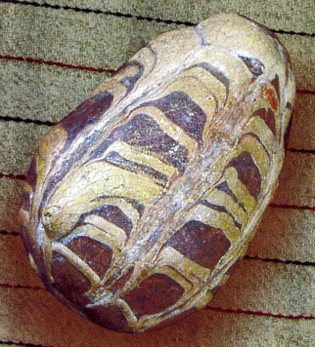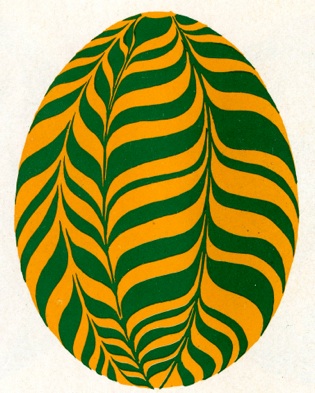Ancient Ceramic
Pysanky
Ancient Ceramic
Pysanky

The oldest Ukrainian “pysanky” in existence date back to the XII-XIII centuries, and are ceramic ones. Because of the fragility and perishable nature of eggs, only the ceramic majolica-glazed eggs of Kyivan Rus have survived up to today. Archeologists have found these ancient eggs not only in the territory of Middle Podniprovya (near the Dnipro River), but also in Western Ukraine. Some seventy exemplars have been discovered to date.
There was a flourishing ceramic business in Kyivan Rus (1000-1200 CE). The eggs made in large cities like Kyiv and Chernihiv, which had workshops that produced clay tile and bricks; these tiles (and pysanky) were not only used locally, but were exported to Poland, and to several Scandinavian and Baltic countries. The pysanky have been found in many sites, and fragments have been discovered in the graves of both children and adults (usually women).

These ceramic eggs were common in Kyivan Rus, and had a characteristic style. They were fashioned from pink and red clays using the spiral method, and then smoothed by hand. They were made to be slightly smaller than real (chicken) eggs–about 2.5 by 4 cm, or 1 by 1.6 inches. An opening was left at the larger end, so that a handle could be inserted, and used to place the pysanka into and remove it from the kiln. (Small pebbles were sometimes later placed in this hole, making the pysanka rattle when it moved.)

11th-14th c. Clay pysanky (from B.A. Kolchin)
After firing, glazes were applied, and it was fired again. The majolica glazed eggs had a brown, green or yellow background, and showed interwoven yellow and green stripes, thought by Erast Binyashevsky to represent the sosonka (an evergreen plant which creeps along the ground and symbolizes everlasting life); it is a common motif on pysanky to this day. Other scholars disagree.

1 2 3 4

5 6 7 8
1 — Ліплява (Lipliava); 2 — Старокиївська гора (Starokyivs’ka hora/hill); 3 — Новгород (Novhorod);
4 — Біла Вежа (Bila Vezha); 5 — Вишгород (Vyshorod); 6 — Білгородка (Bilhorodka);
7 — Кононча (Kononcha); 8 — Київ, гора Киселівка (Kyiv, Kyselivka Hill)
These are essentially the same colors used in traditional Hutsul ceramics today (as can be seen in the Hutsul ceramic pysanky below).
For more information on the subject, two articles in Ukrainian:
Давноруські писанки А.О. Сушко, Археологія, 2011, No 2
Київські глиняні писанки Степан Ґеля, Наше Життя, квітень 1947




Back to History home page
Back to MAIN Pysanka home page.
Back to Pysanka Index.
Search my site with Google
Binyashevsky’s depiction of an ancient ceramic
Kyivan’ Rus’ pysanka
